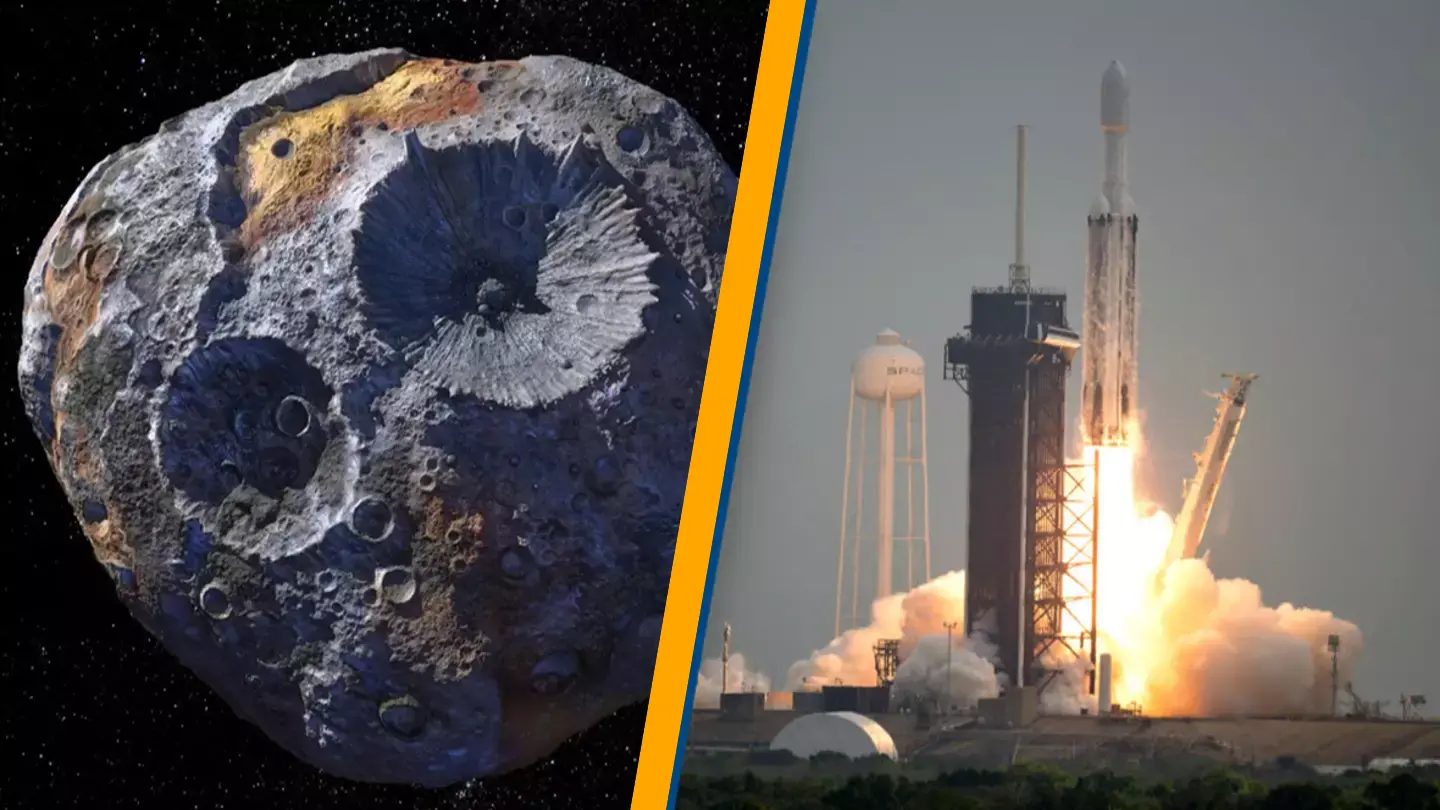An asteroid with an estimated value of $10,000,000,000,000,000,000 has sparked the imagination with the idea of potentially turning every person on Earth into a billionaire, at least in theory.
Recently, NASA launched a SpaceX Falcon Heavy rocket on a mission to explore 16 Psyche, one of the largest M-type asteroids known.
The spacecraft is set to journey 2.2 billion miles (3.5 billion km) to reach its target, situated within the main asteroid belt between Mars and Jupiter.
What sets this asteroid apart is its composition. While most asteroids consist of rock and ice, 16 Psyche is rich in metals.
This asteroid’s makeup includes valuable elements such as platinum and palladium, which are crucial for automotive and electronic applications on Earth.
Among the nine metal-rich asteroids identified in our solar system, 16 Psyche is the largest, which is why NASA is focused on studying it.
According to NASA, this uniquely shaped asteroid, with a surface area of approximately 64,000 square miles (165,800 square kilometers), consists of 30 to 60 percent metal.
It is also believed to possibly contain the exposed nickel-iron core of an ancient planet, contributing to our understanding of the solar system’s formation.
Hypothetically, if 16 Psyche were brought back to Earth and its materials distributed, every person could become a billionaire.

Let’s explore what would happen if the asteroid’s materials, valued at $10 trillion, were evenly distributed among all people.
With approximately 8.025 billion people on Earth as of 2023, dividing $10 trillion would yield around $1,246,105,919 per person.
While this scenario sounds ideal, it would likely lead to significant economic disruption.
Despite having $1.25 billion, individuals would still fall far short of the wealthiest figures in society.
Take Elon Musk, for instance, whose net worth surpasses the asteroid payout by 250 times, at $313.9 billion.

NASA’s mission to 16 Psyche is not primarily for the extraction of metals but to gain insights into planetary cores and the process of planetary formation.
The SpaceX rocket is not expected to reach its destination until July 2029, so the investigation is still in its early stages.
As noted on NASA’s Psyche mission webpage, “Psyche offers a unique window into the violent history of collisions and accretion that created terrestrial planets.”
The mission also seeks to determine if the asteroid indeed represents the core of a planetesimal, a relic from the early solar system.

